Lot No : 125
Auction No : 7
Alamgir II (AD 1754–1759, AH 1167–1173), Gold ½ Pagoda, 1.70 grams Minted at Imtiyazgarh (modern-day Adoni), Extra Fine, Not listed in any catalogue, Exceedingly Rare. Alamgir II ascended the throne during one of the most turbulent phases of the Mughal Empire. His reign was marked by internal court intrigues, weak central authority, and the growing dominance of regional powers such as the Marathas and the Nawabs of the Deccan. Meanwhile, the British East India Company was expanding its influence through both diplomacy and military conquest. The mint at Imtiyazgarh, located in southern India, was one of the remaining centers where Mughal coinage was struck, symbolizing the nominal imperial control over the Deccan region. Despite these coins carrying the emperor’s name and titles, the Mughal emperor’s power was largely ceremonial, with regional governors exercising significant autonomy.
55000
Lot No : 129
Auction No : 7
Shah Alam II (1174–1221 AH / c. 1760–1806 CE), Copper Paisa, 12.70 grams, Minted at Haidernagar, dated AH 117(7), Early issue of Haider Ali, Very Fine+, Very Rare In 1177 AH (1763–64 CE), Haider Ali of Mysore consolidated power by expanding his military influence across southern India, asserting de facto independence while still nominally recognizing Mughal authority, and began issuing coins in the name of the Mughal emperor to legitimize his rule.
3000
Lot No : 130
Auction No : 7
Mughal Empire, in the name of Shah Alam II (1174–1221 AH / c. 1760–1806 CE), Copper Paisa, Pistol as the mint mark, 12.70 grams, Minted at Akbarabad, dated AH 1217, Scarce In AH 1217 (1802–03 CE), under the reign of Shah Alam II, coins continued to be struck in his name at the Akbarabad (Agra) mint, despite his power being largely symbolic. These issues reflect the persistence of Mughal prestige, even as real authority had shifted to regional powers and the British East India Company.
2000
Lot No : 131
Auction No : 7
Muhammad Akbar II (1221–1252 AH / c. 1806–1837 CE), Silver Rupee, 10.90 grams, Minted at Shahjahanabad (dated AD 12(21) / AHAD), Very Fine+, Rare In AH 1221 (1806 CE), when Akbar II became emperor, the Mughal Empire had lost all real power, with British control dominant across India. The emperor ruled only in name from Delhi, and his authority was limited to ceremonial functions, while regional powers and the East India Company held actual control

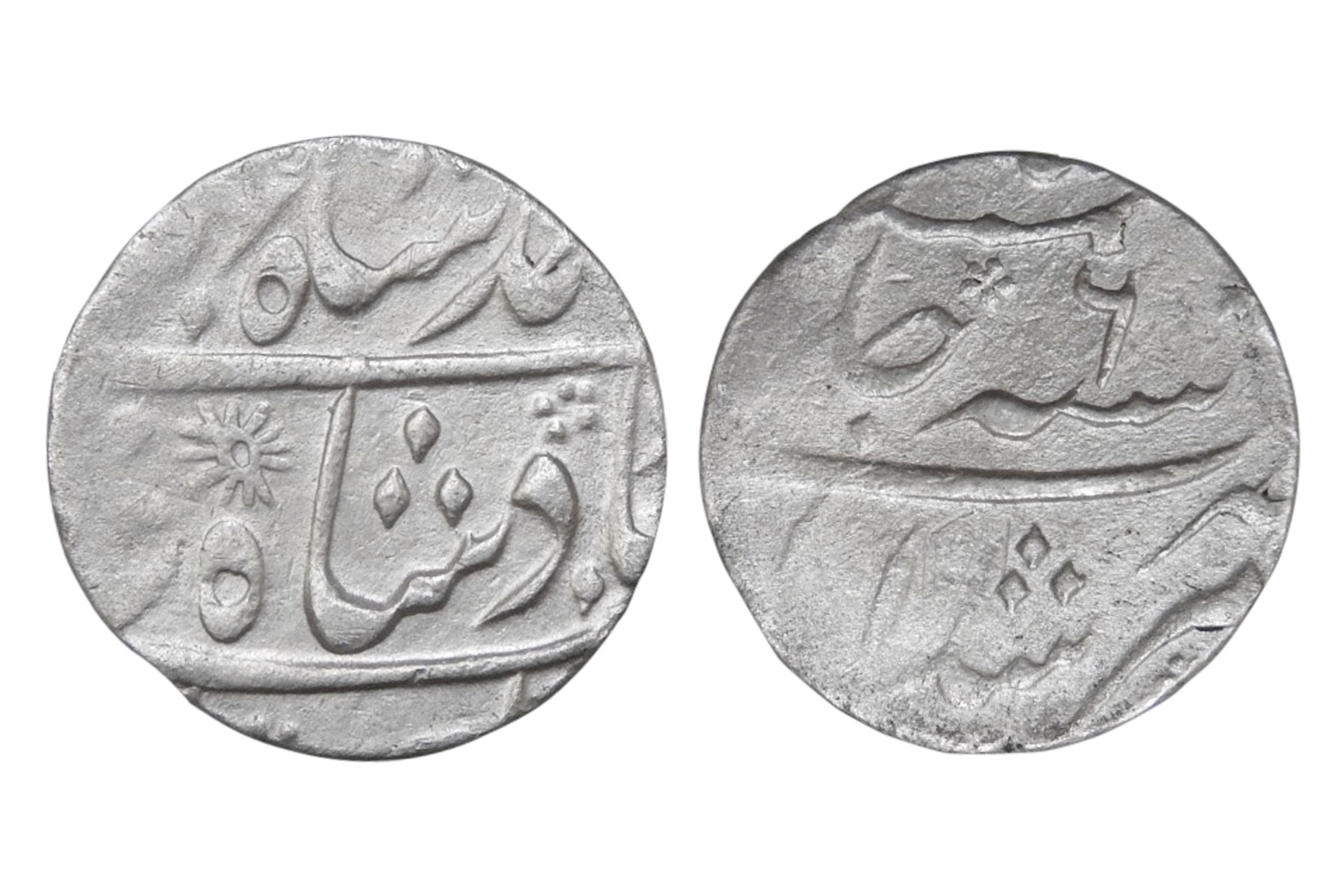
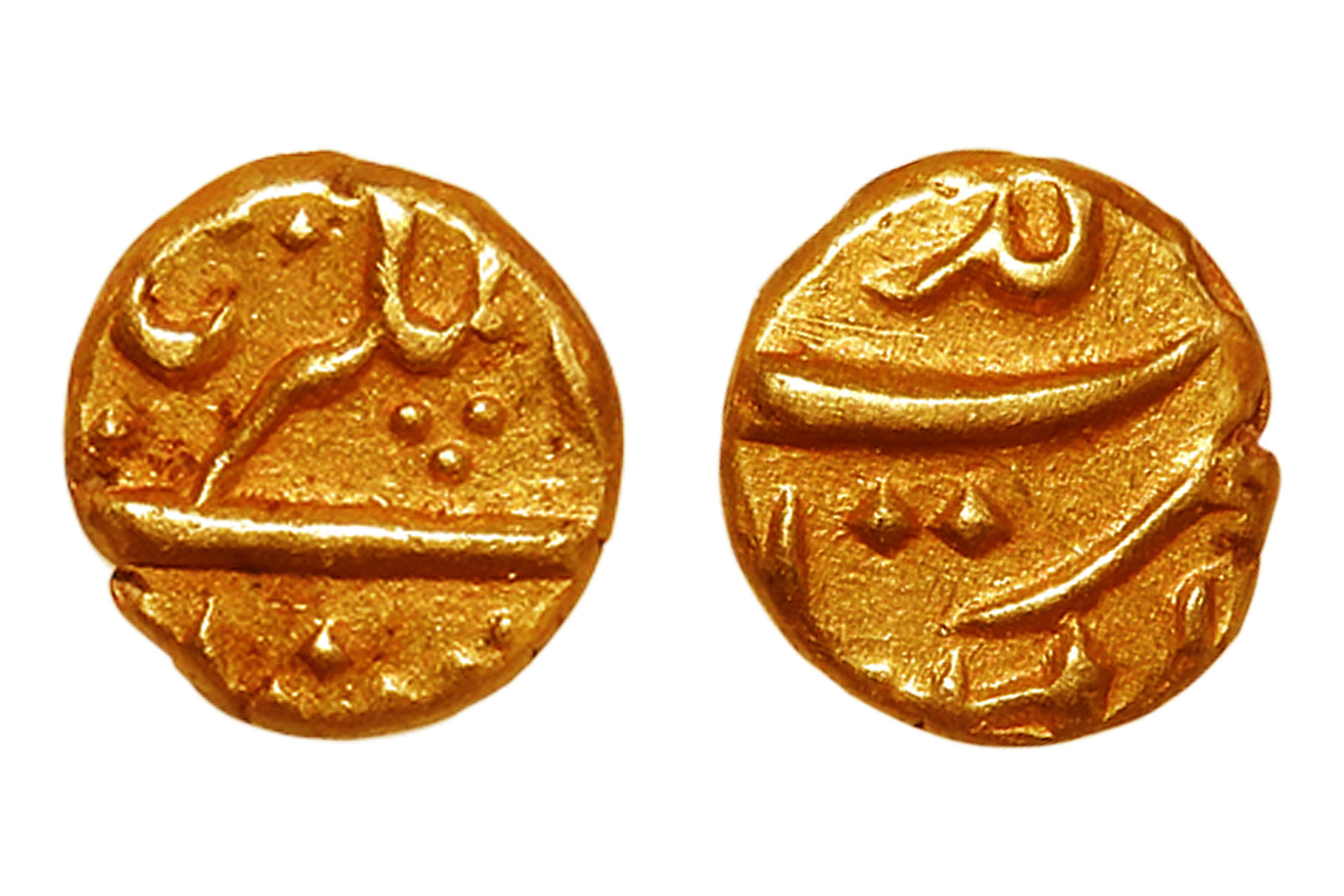
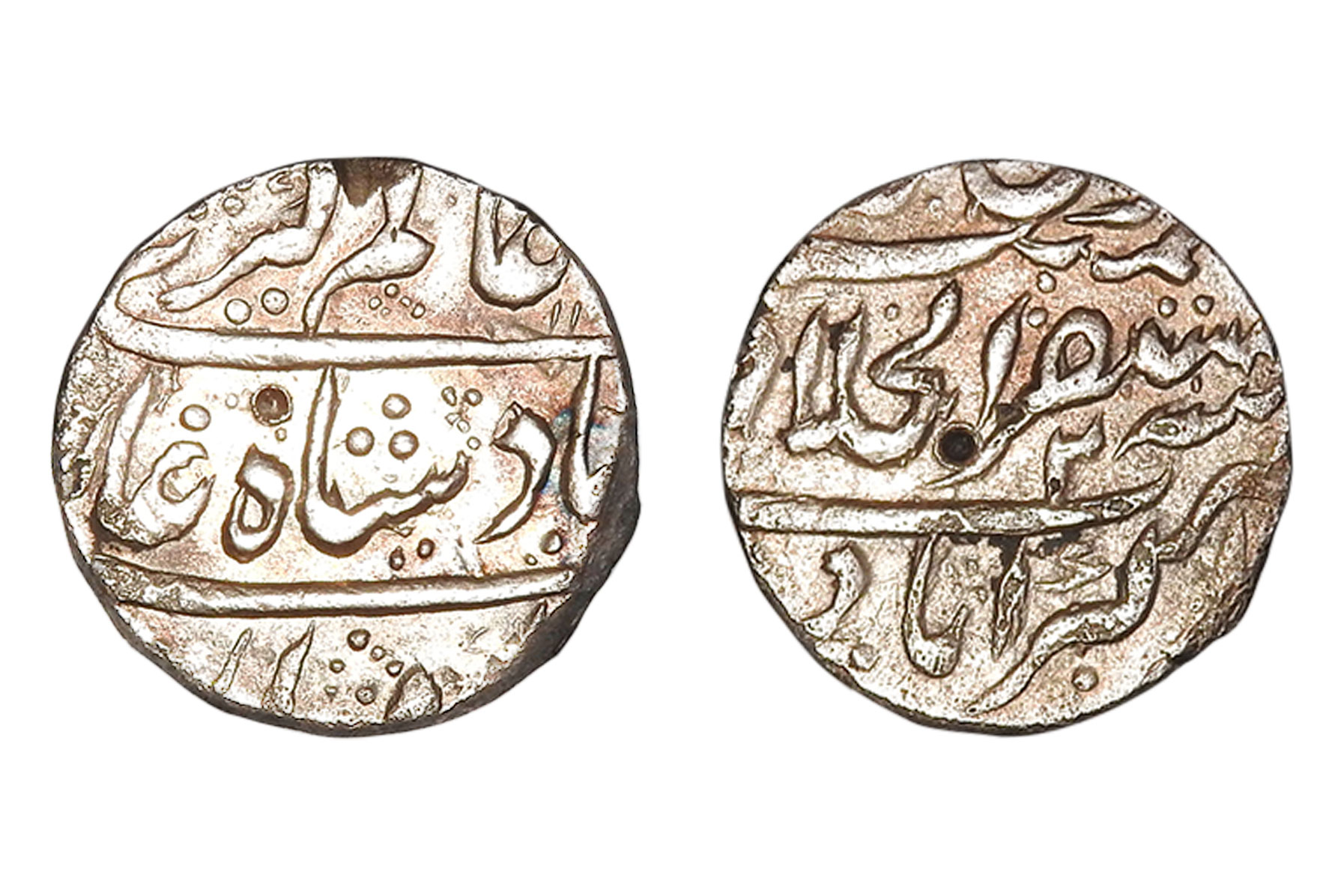

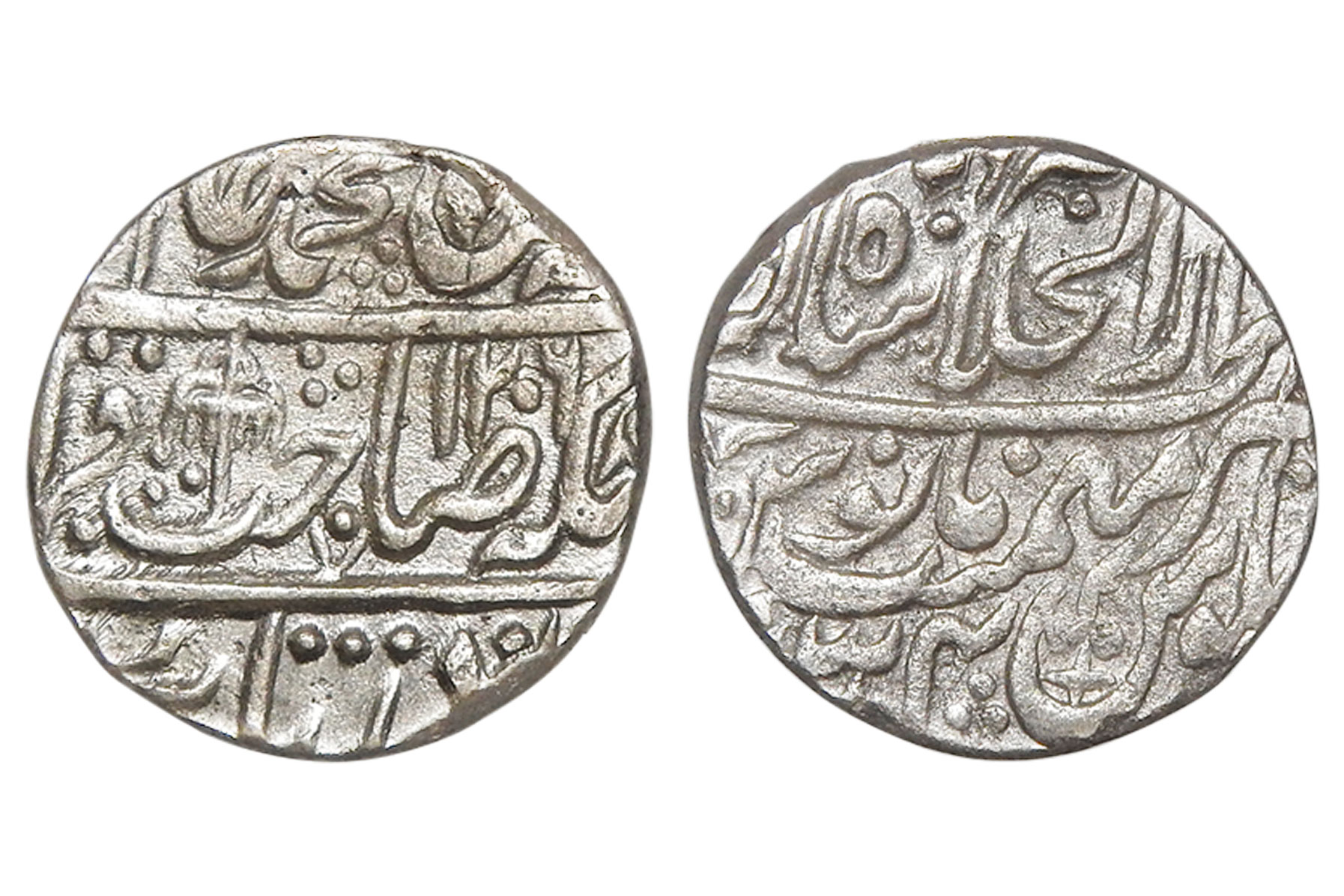
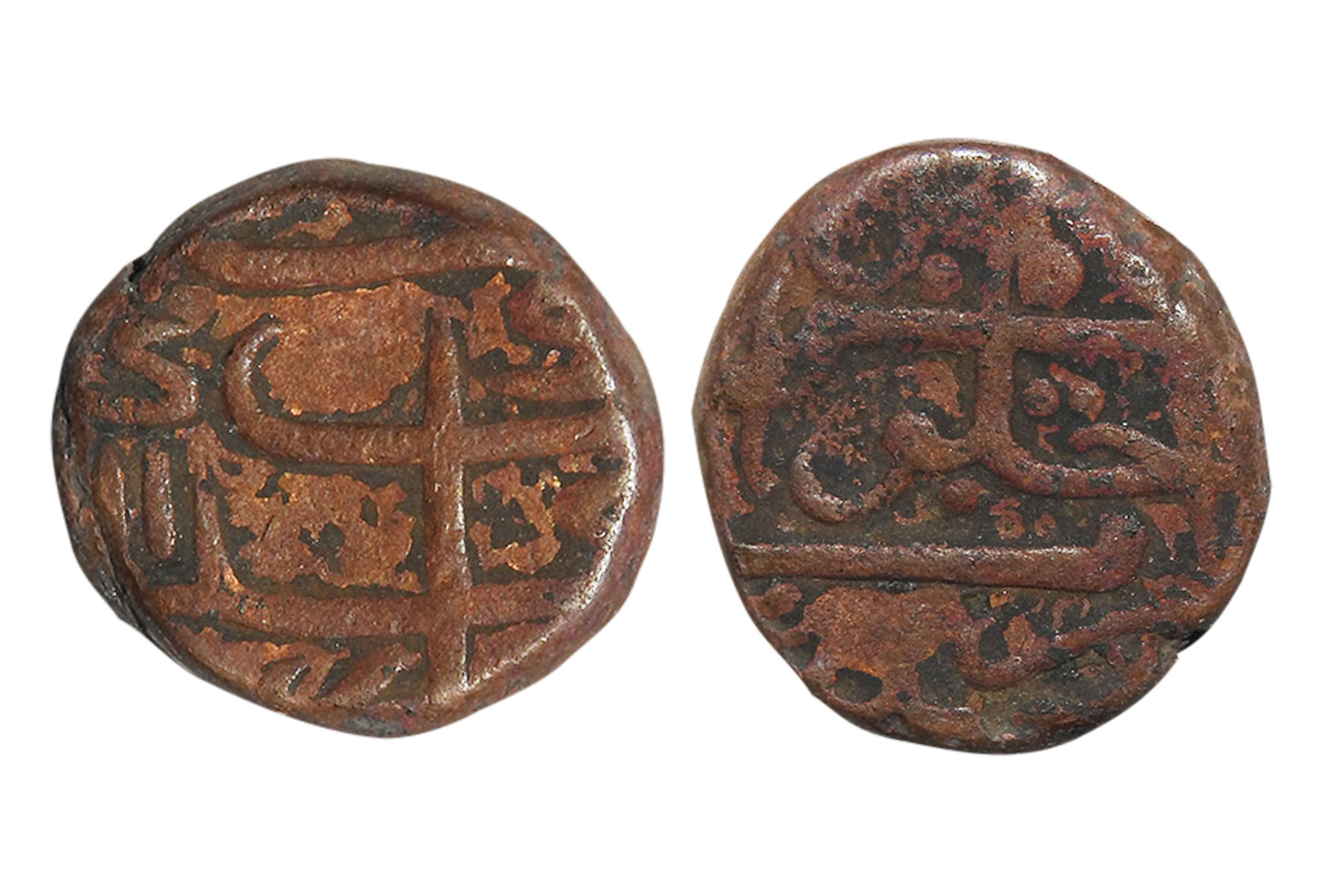
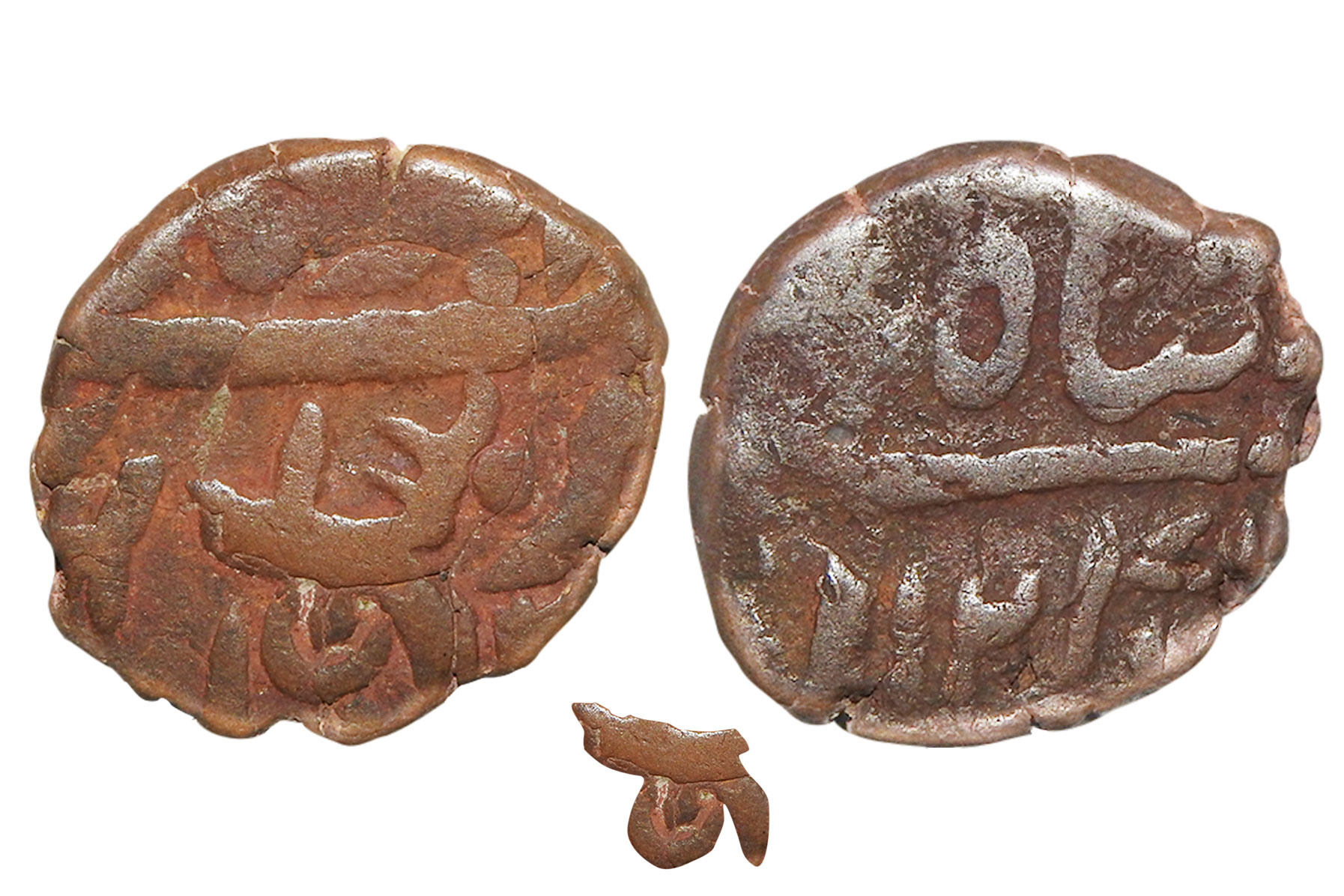
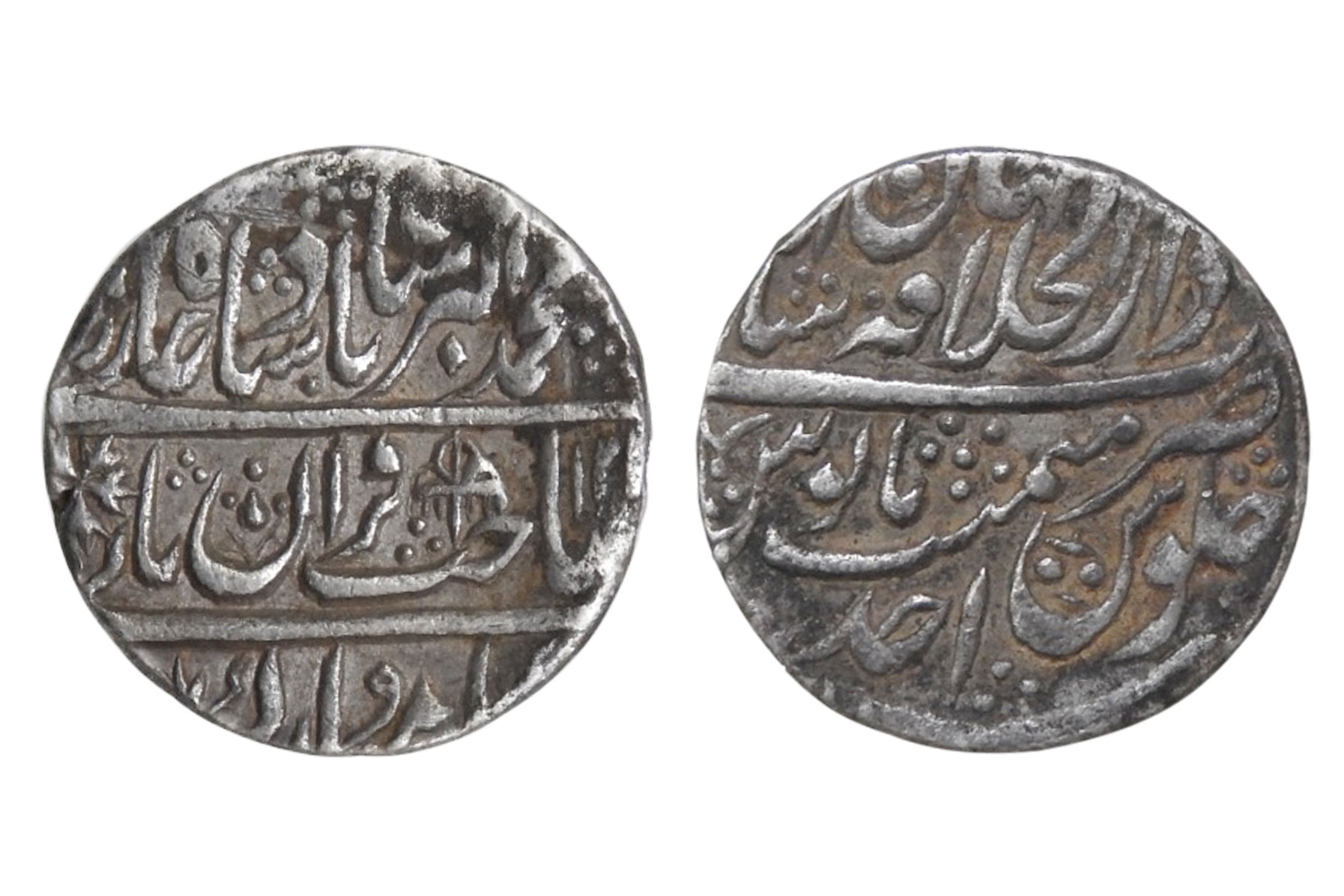
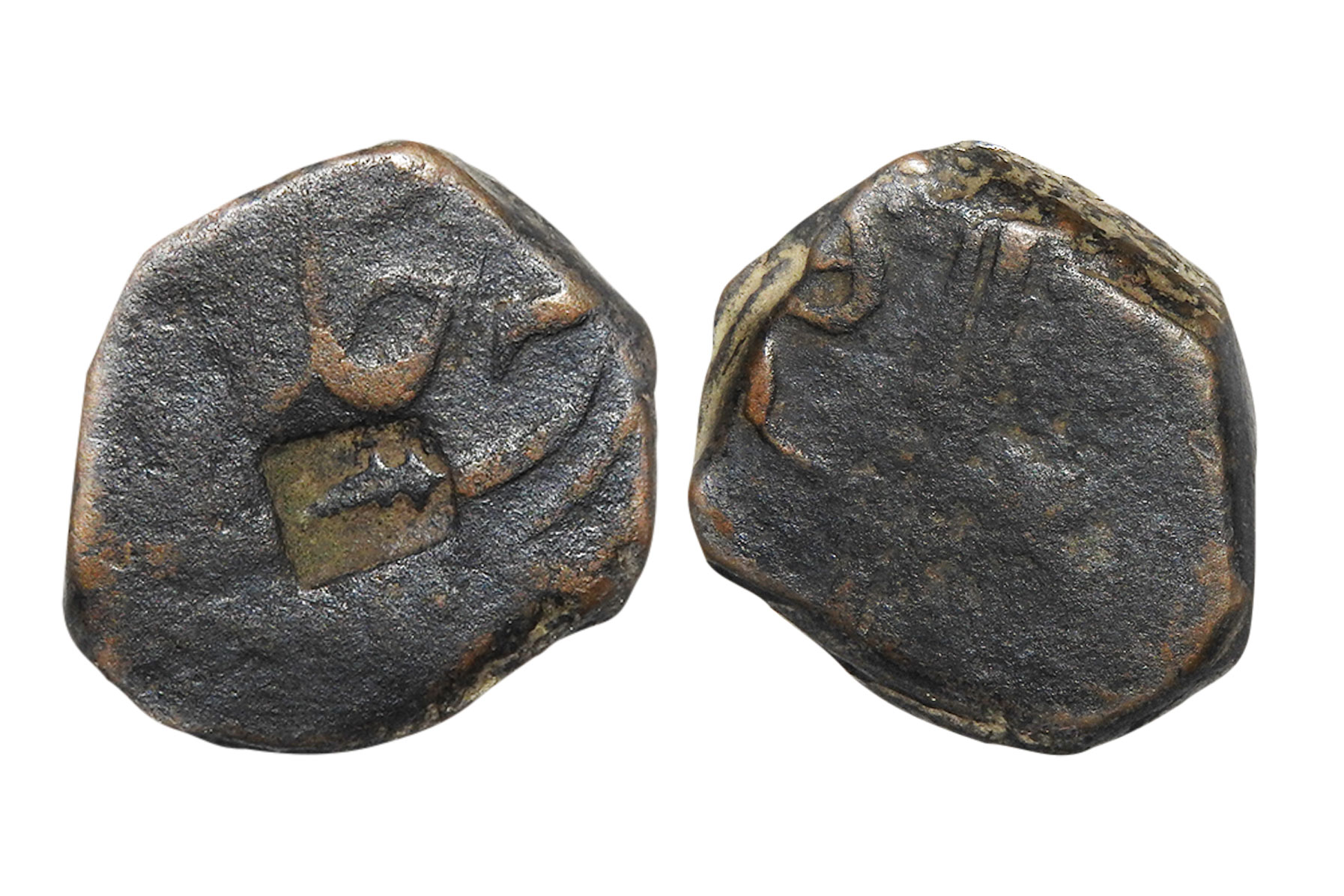
 WhatsApp
WhatsApp